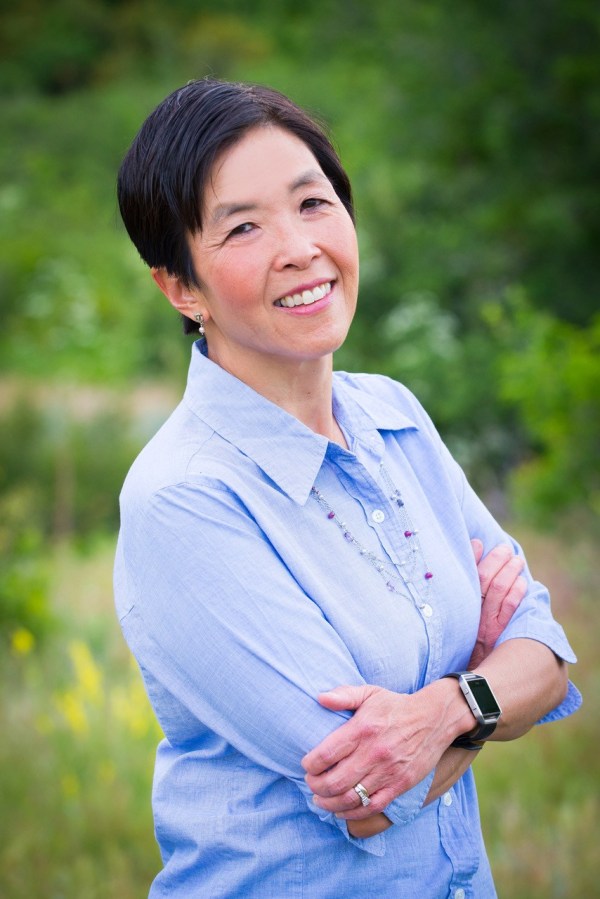Before Tokyo even existed, Kyoto was Japan's major city. Imperial families lived here and created a ruling class that gives the city its majestic air. The reason: there are more shrines, temples and parks per square mile here than in the capital.
Japan's historical heart
History and tradition also comes in the form of the geisha, or geiko, culture. In Kyoto, it is most established and prominent than in any other part of the country. Young women (and some men) walk around in full traditional attire in yukata (summer kimono), wooden sandals and hair ornaments.
On our first day in Kyoto, at the same as our food experience, we toured the Fushimi Inari shrine (taisha), one of the city's most prominent points of interest. The complex is part of a much larger park with a network of trails that lead up to Mt. Inari, the highest point in the city. If we hadn't already exhausted ourselves walking around with the group in the sultry heat, we would have attempted it. As such, we were content to just cover the main grounds.
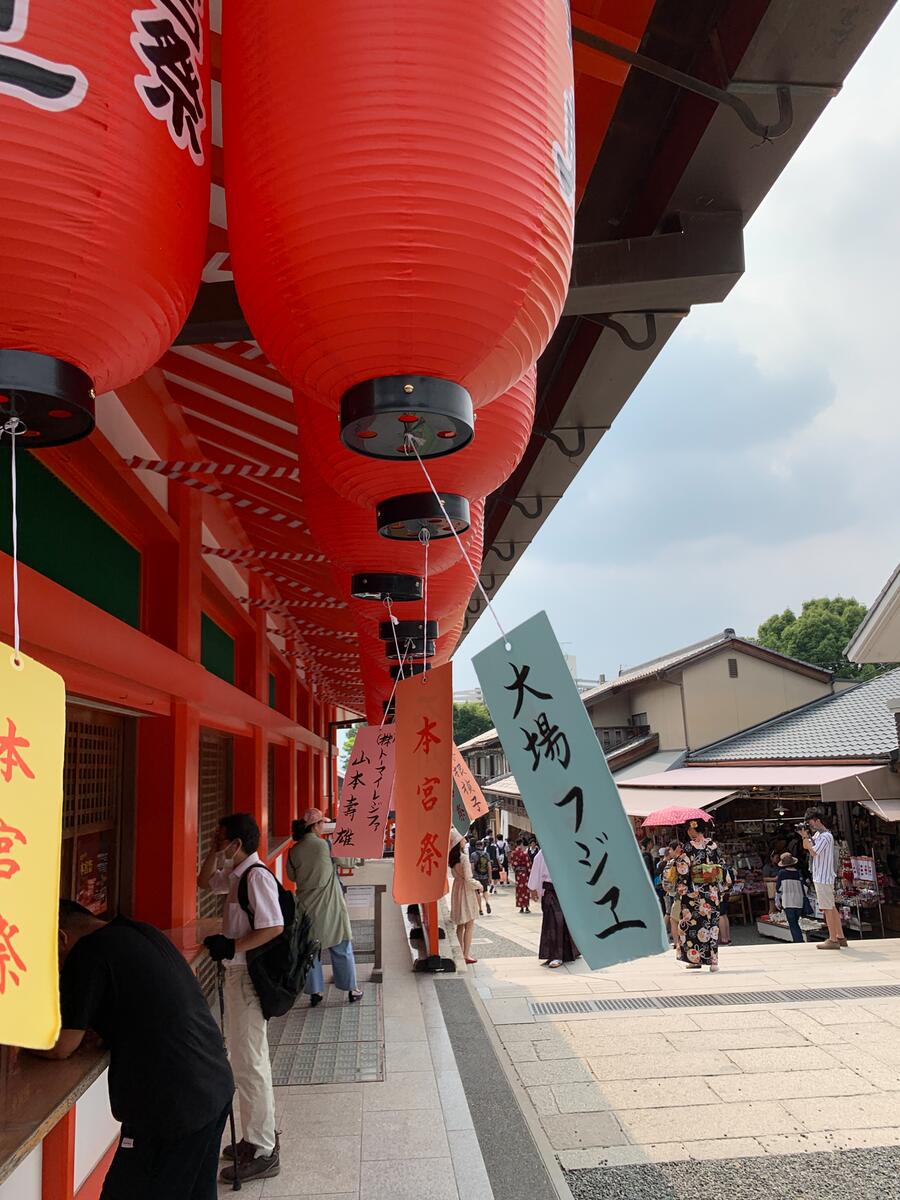

Kyoto's fox shrine
Dedicated to the Shinto god of rice, Fushimi Inari features statues of foxes everywhere. They were the messengers between the divine and mortal worlds and are thus part of the shrine's landscape. It's probably Kyoto's most visited landmark.
The other famous aspect of the shrine is the Senbon Torii, or thousand gates. You'll see this in any material about Japan, but it's something quite different being there in person. Many visitors walked alongside us, even jamming up the pathway several times. But I felt calm as I strolled through the quarter-mile orange-lit tunnel, like those mythical foxes were watching over us.
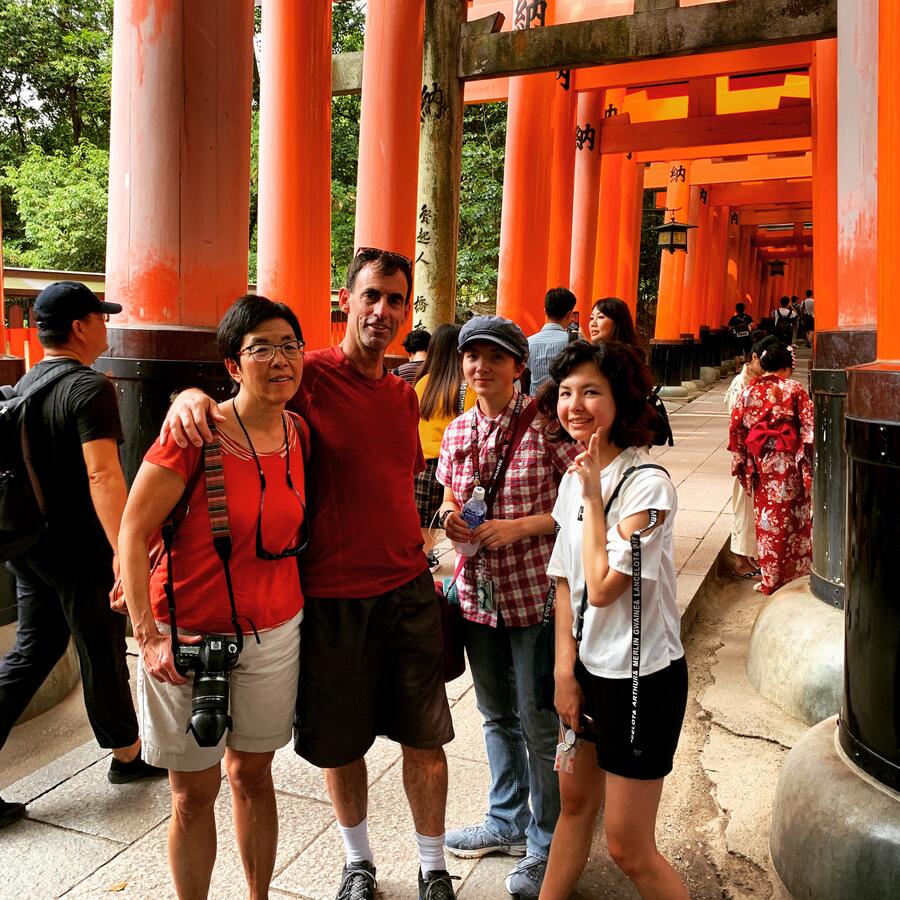
The geisha district
Later that day, about half our group toured the Gion district in central Kyoto, which actually consists of several smaller precincts. Our guide Junko took us through the back streets here, where we saw a few geisha. They were either the apprentice (maiko) and the professional (geiko).
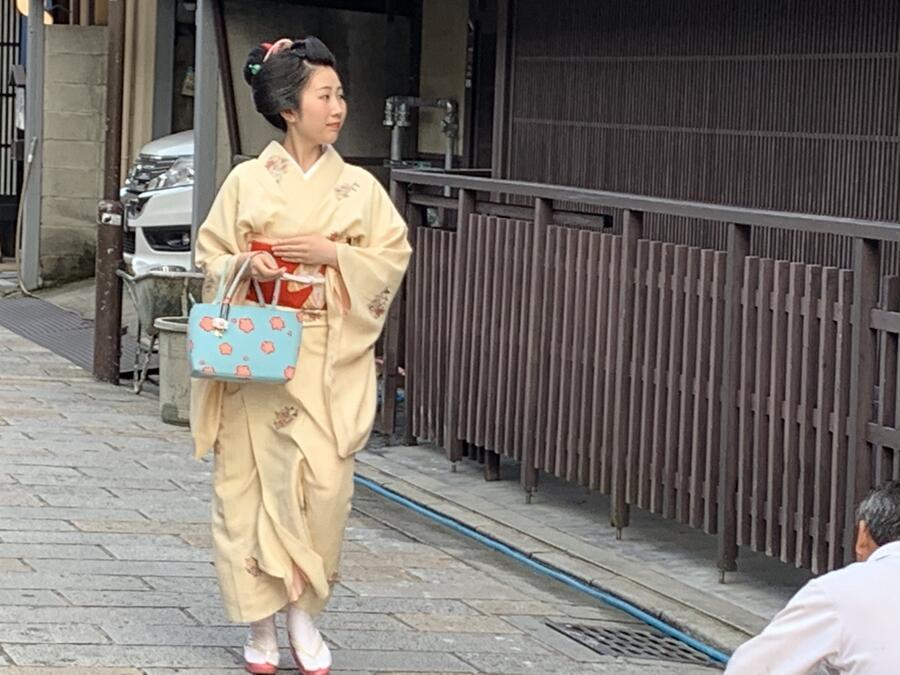
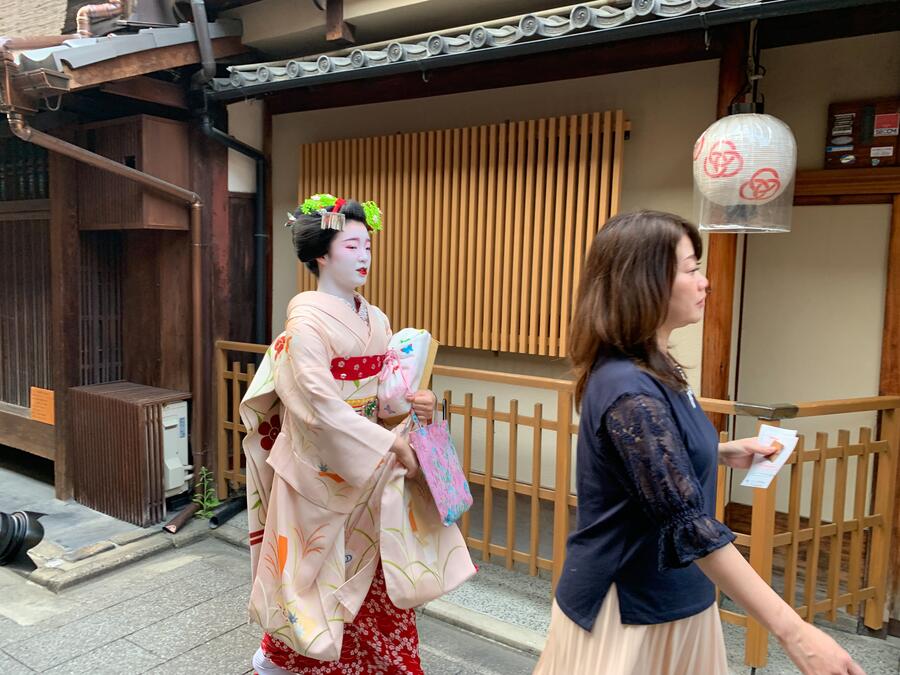
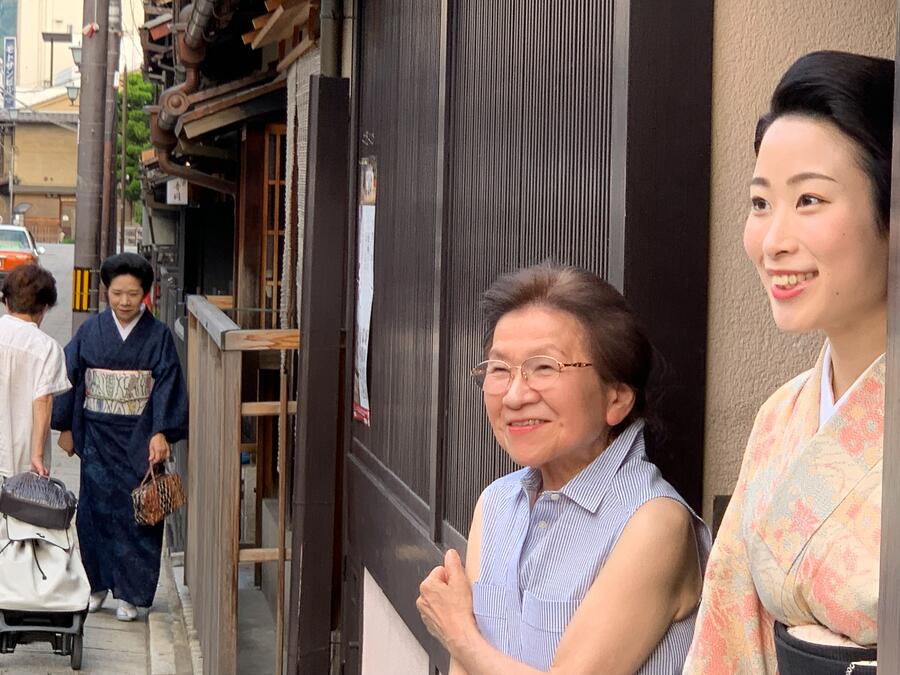
Geisha epitomize the beauty, grace and hospitality of Japanese culture, but it's not easy. Maiko must go through a rigorous five-year training. It involves only two days off each month and having outside electronic contact or relationships. This starts when girls are sixteen, and just about half complete their apprenticeship.
Essentially, geisha are entertainers for wealthy clients, nearly all of which are men. The women who join them are often their wives. Geisha learn music, dance, singing, and surprisingly how to drink quite a bit to encourage drinking games with their clients.
Getting our Zen
Our final activity in Kyoto was a Zen Buddhist meditation practice. We took taxis from our hotel to the Kennin-ji Temple complex. Within this was the Ryosoku-In Temple, where we met a Zen Buddhist monk who led us through the meditation. This actually came somewhat easy for me, as I meditate daily. But it was very different from what I know.
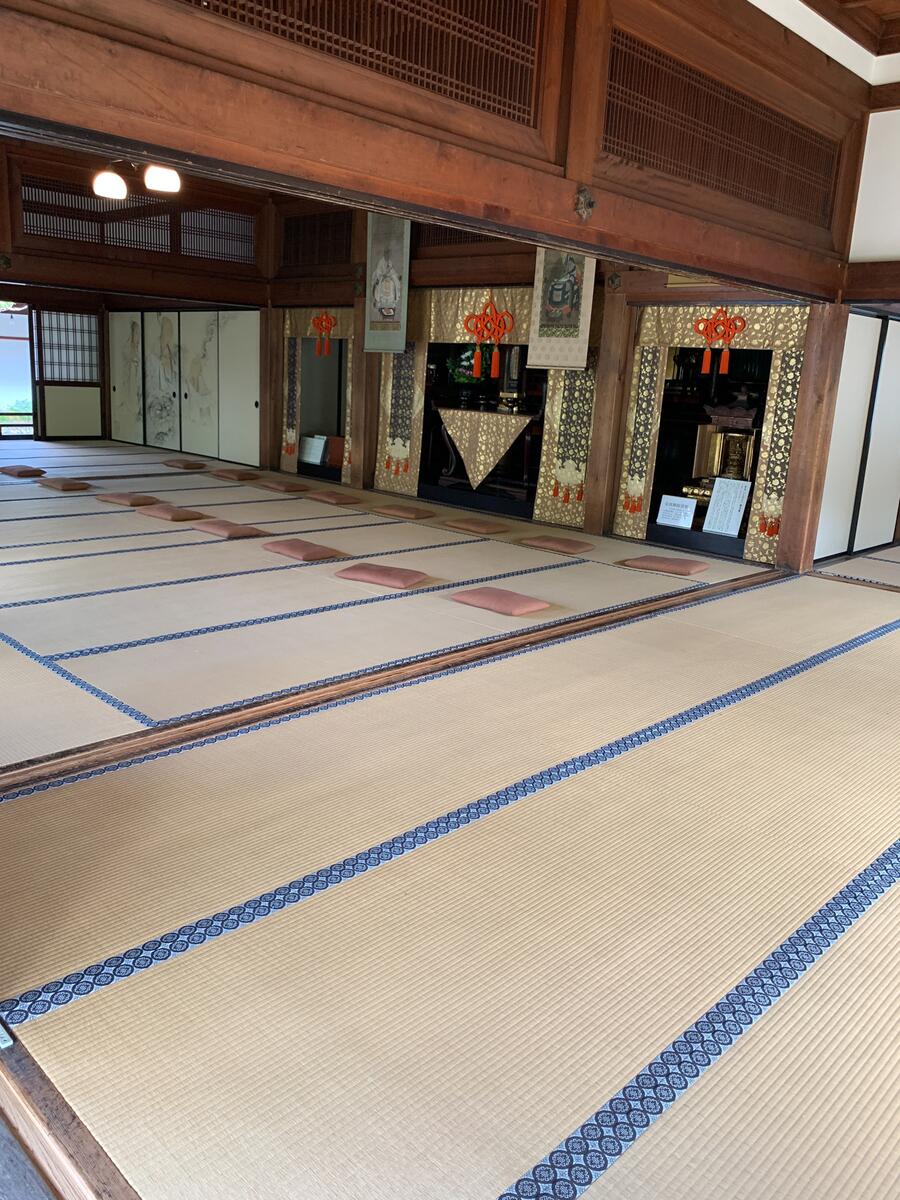
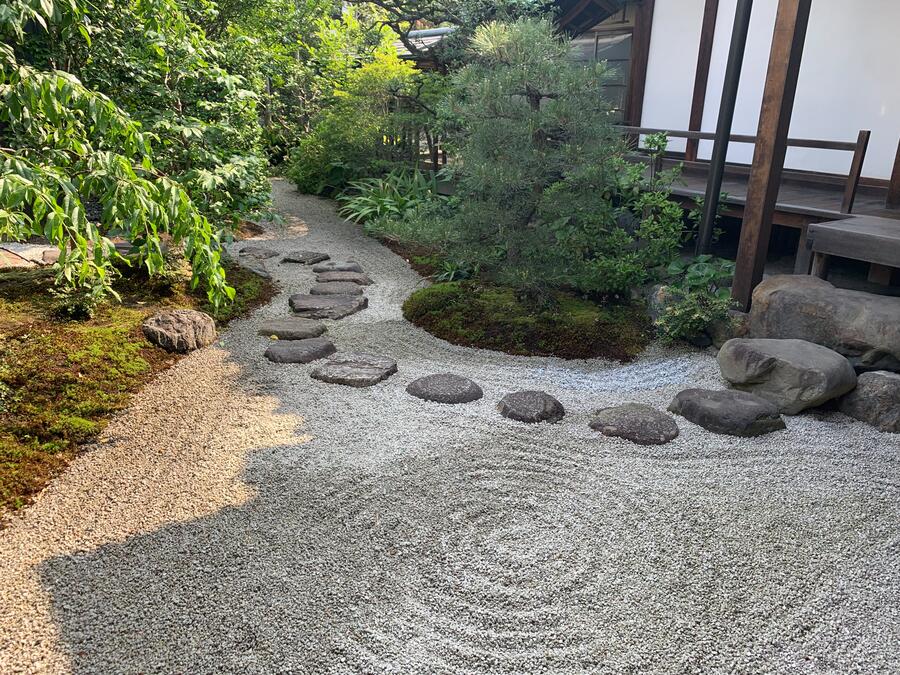
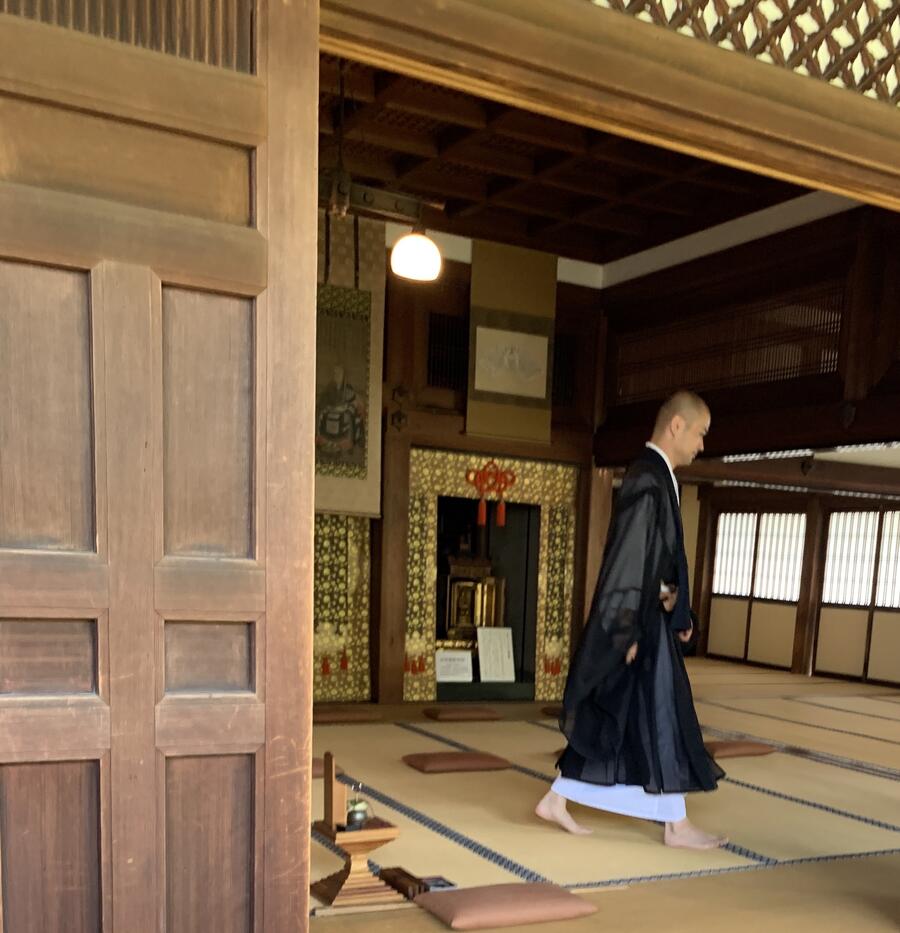
We were told to absorb the sounds and distractions around us and to allow it to be part of our practice. At one point, the teacher took a long stick and (with our express permission), would hit our shoulders as a way to re-center. It actually didn't hurt too much. The complete silence was a revelation, and it somehow connected me to part of ancient Japan.
